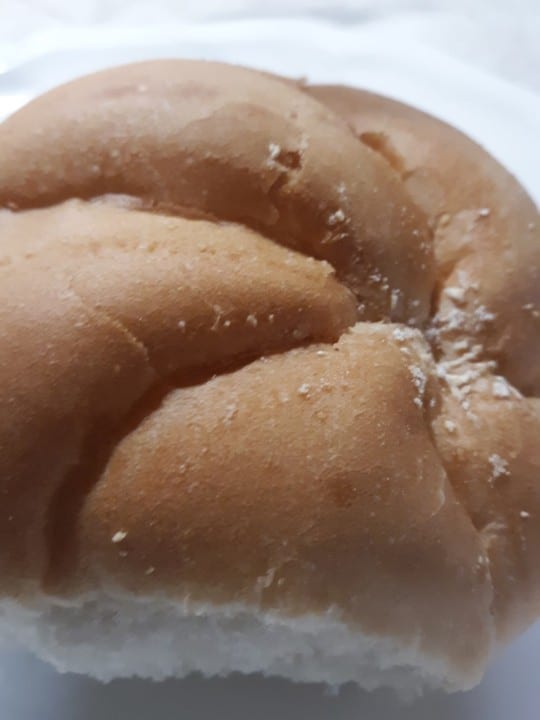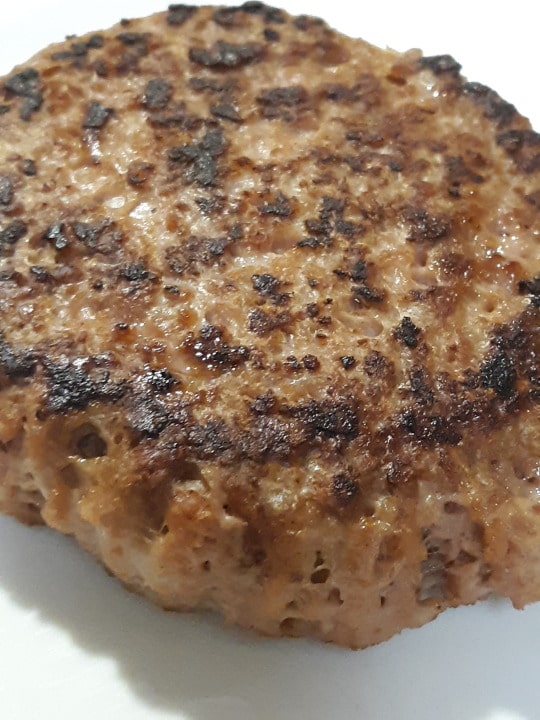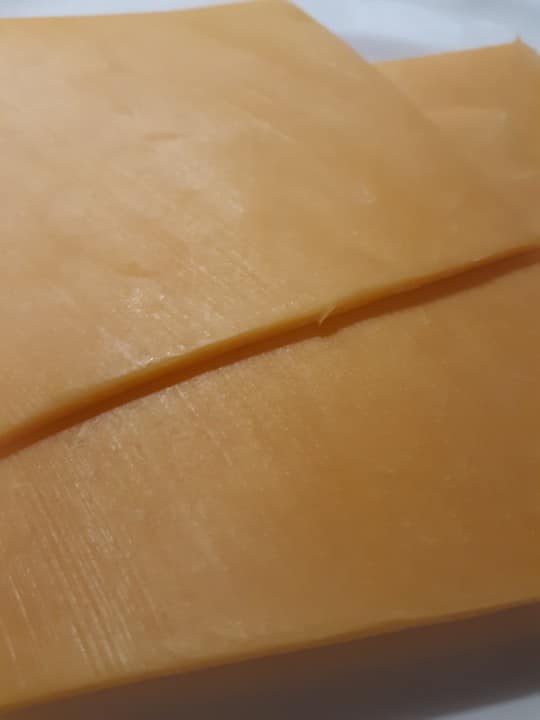In one large bite, a bun, ground beef patty, cheese, lettuce, and tomato could finally fulfill its purpose: to be my lunch. Many people have seen ads for, or even eaten a cheeseburger before. But where do all the ingredients come from? The tasty combination of meat, vegetables, grain, and milk product has 12,000-year-old roots in a faraway land across the sea. From there, over thousands of years and thousands of miles, it made a journey to its ultimate destination … my stomach. As delicious as it is, every good ending has a story.
The Bun
For a proper burger, you need the bun to sandwich all its deliciousness. The main ingredient for the bun is flour, which comes from wheat. Today, there are 25,000 distinct forms of wheat, all descended from a plant called emmer, which first originated in the Fertile Crescent within the Middle East. The earliest evidence for emmer being deliberately grown by humans for food (domestication) was from at least 12,000 years ago.
Ancient humans, just like us today, enjoyed eating wheat products (I love my pizza!). Where it grows abundantly, wheat is easily harvested and can be stored for extended periods of time, making it a stable source of vegetable protein. Thus, some of the first civilizations, like the Babylonians and Assyrians, sprung up in the Fertile Crescent. Emmer wheat spread to Greece, Cyprus, and India by 6500 BCE, and to Egypt shortly after. In fact, the Egyptians are the first people known to make bread.

The Patty
Now let’s get to the deliciousness housed between the buns: the patty. Traditional cheeseburgers are made from beef, which comes from cattle. Unlike emmer wheat, cattle, which descended from wild oxen called aurochs, were domesticated separately in two (possibly three) different places: the Fertile Crescent, the Indus Valley (modern-day Pakistan), and possibly northeast Africa 10,000-8000 years ago. From there, domesticated cattle spread across the continents of Africa, Asia, and Europe.
Cattle were one of the first mammals to be domesticated. They provide many useful products used for consumption (meat, milk, fat) and tool making (horns, hooves, hides). Additionally, their large size allowed them to pull heavy objects like plows for farming. Because of their importance, many religions and cultures considered cattle to be sacred. In Ancient Egypt, many of their gods had cattle forms, including Hathor, Ptah, Menthu, and Atum-Ra, Ancient Greeks often used cattle as sacrifices to the gods. Even today, Hindus do not eat cattle meat.

The Cheese
Finally, a cheeseburger would hardly be a cheeseburger without the cheese (which is made from milk). Although cow milk is the most popular source material today, cheese was originally made from goat or sheep milk. Cheesemaking began over 4,000 years ago, but how it started is unclear. Legend has it that it was an Arabian merchant who accidentally created the first cheese. He put his milk in a pouch made from a sheep’s stomach as he traversed across the desert. Sheep stomachs contain an enzyme called rennet, and when the milk chemically reacted to the enzyme and heat from the sun, it separated into curd and whey. The curd is what we commonly refer to as the cheese.
Although cheesemaking’s origins remain ambiguous, the Romans were the first to make cheesemaking a widespread industry. Aging and smoking cheese extends the product’s shelf-life, enabling Roman soldiers to carry this excellent source of protein with them. As they conquered the European continent, they spread their cheesemaking. At the height of the Roman empire, they were making and trading hundreds of different kinds of cheese. Only later during European colonization was cheese spread to the Americas and Asia.

The Cheeseburger
So what genius put it all together? None other than a 16-year-old named Lionel Sternberger. His father owned a sandwich shop, and one day in 1924, Lionel put a slice of American cheese on one of his father’s hamburgers. He called it a “cheese hamburger.” One decade later, a Kaelin’s restaurant in Louisville, Kentucky gave the sandwich the name “cheeseburger,” which was trademarked in 1935 by Louis Ballast of Humpty Dumpty Drive-In.

The End (of This Story of Deliciousness)
Who knew that there was so much behind a basic cheeseburger? From sheep stomach pouches to Babylonians, each played a role in creating the cheeseburger in your hands. Even Pittsburgh has some cheeseburger fame! Did you know that Jim Delligatti, who owned a restaurant in Uniontown PA, part of the Greater Pittsburgh Region, created the McDonald’s Big Mac in 1967?
Angela Wu is a Teen Volunteer in the Education Department. Museum employees, volunteers, and interns are encouraged to blog about their unique experiences and knowledge gained from working at the museum.
Sources:
The Big Mac turns 40, gets a museum. (2007, August 26). ABC News. Retrieved August 9, 2020, from https://abcnews.go.com/Business/story?id=3524528&page=1#:~:text=The%20Big%20Mac%20was%20first,staple%20of%20McDonald’s%20menus%20nationwide.
Cooper, R. (2015, July). Re-discovering ancient wheat varieties as functional foods. ScienceDirect. Retrieved August 5, 2020, from https://www.sciencedirect.com/science/article/pii/S2225411015000401
Cownie, E. (2018, August 27). Why cattle mattered in the Ancient World. Medium. Retrieved August 8, 2020, from https://medium.com/@emmafcownie/why-cattle-mattered-in-the-ancient-world-4e27b1c37e58
Hirst, K. (2019, July 9). Wheat Domestication. ThoughtCo. Retrieved August 6, 2020, from https://www.thoughtco.com/wheat-domestication-the-history-170669
History of Cheese. (2020, January 25). International Dairy Foods Association. Retrieved August 6, 2020, from https://www.idfa.org/history-of-cheese
Mitzewich, J. (2020, May 15). Who Invented the All-American Cheeseburger? The Spruce Eats. Retrieved August 7, 2020, from https://www.thespruceeats.com/birth-of-the-cheeseburger-101426
Pitt, D., Sevane, N., Nicolazzi, E. L., MacHugh, D. E., Park, S., Colli, L., Martinez, R., Bruford, M. W., & Orozco-terWengel, P. (2018). Domestication of cattle: Two or three events?. Evolutionary applications, 12(1), 123–136. https://doi.org/10.1111/eva.12674
Roberts, B. (2018, March 5). The Fascinating 7,500 Year History of Cheese. Forbes. Retrieved August 5, 2020, from https://www.forbes.com/sites/brianroberts/2018/03/05/the-history-of-cheese/#4807da304ca1
